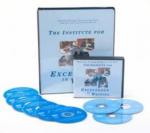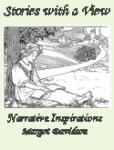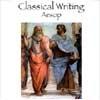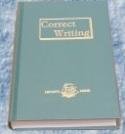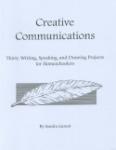Composition
Teaching Writing: Structure and Style
Stories with a View, Narrative Inspirations, Selected Poetry and Paintings, Story starters for Grades 3-4
I must admit a bias. Because I have used the method suggested in Stories with a View for years with my own children, I highly recommend this resource. Why? It works! By observing and interacting with pictures and poetry, young writers are inspired to write interesting fiction.
In fact, Mrs. Davidson makes this method even easier to implement by offering discussion questions and suggested "story starters" to prompt the young writer. For example, with A Restful Tune (a painting about a shepherd boy playing a reed pipe) the questions include:
Classical Writing: Aesop
If you are attracted to the classical method of teaching composition, by analyzing and imitating excellent literature, but have struggled with implementing your own program, then this is the writing series for you. Meticulously thought through and well organized, Classical Writing: Aesop combines structure with flexibility. It can be used with multiple ages in the homeschool and, though designed for beginning writers in grades 1-5, can be adapted for older ages.
WriteGuide.com Individualized Writing Course
We've all heard the whining and complaining that can come with teaching composition. Many children just refuse to make the effort to write, and when they finally do finish an assignment their parents agonize over how to grade the composition. Having heard the writing complaints for years, I am excited to report that there is now a solution in WriteGuide.com.
Creative Communications
The Institute for Excellence in Writing
The Institute for Excellence in Writing, owned by a Catholic convert and home school father, teaches the "structure and style of writing" through live and video workshops. This program is used throughout Canada. As do other programs IEW teaches structure (organizing material for writing) so that the final written piece will be logical, but unlike most programs children are trained to do this by using the writings of good authors. The structure of writing is taught by having children read literature, outline the literature, narrate from their outline, then write their own piece.
Writing Strands
The Writing Strands program focuses on the structure of writing by teaching the student to organize his thoughts before writing. Many of the ideas the author uses are found in other English programs, such as Voyages in English, but in WS they are presented in a more systematic fashion with each lesson building on preceding lessons. The lessons are written for the child to read and do independently, with the parent checking work occasionally. WS is very straightforward and directs the child to write about specific topics.

